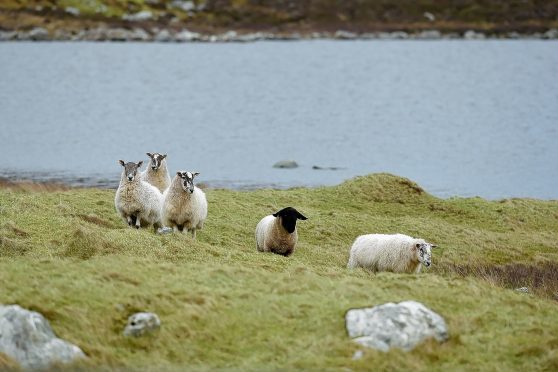The deadline is now rapidly approaching for farmers and crofters looking to benefit from the new ewe hogg scheme.
Applications under the Scottish Upland Sheep Support Scheme (SUSSS) close in just two days’ time, on Monday, October 17.
The linked scheme is designed to assist active hill farmers and crofters through a payment coupled to the number of ewe hoggs they keep as breeding replacements.
But as SUSSS enters its second year, NFU Scotland (NFUS) said it anticipates some producers may become exposed to financial hardship because payments could again slip below predicted rates.
This is because the scheme has a fixed 8million euros (£7.23million) annual budget and payments will fluctuate in correlation with the number of animals claimed for each year.
If a high number of animals are eligible, average payments will fall.
Last year, payment rates equated to 78 euros (£70) per ewe hogg – well below the Scottish Government’s original 100 euros (£90) estimation.
But although NFUS lobbied for changes to the scheme which would avoid ‘over claiming’, it said none of the suggested improvements have been taken on board by Holyrood.
As a result, the union’s Less Favoured Areas committee chairman Martin Kennedy, who farms in Highland Perthshire, said hill farmers and crofters should prepare themselves for lower rates yet still.
“The rate of payment in year one was disappointing compared to what applicants had been expecting, and we believed positive tweaks could easily have been made by Scottish Government for year two that would have fine-tuned the system,” said Mr Kennedy.
“These tweaks would not only have made these precious funds more applicant friendly but also be far better targeted at those active hill sheep producers who are most reliant on the support.”
But with no changes made to the scheme, NFUS said the government must be open with industry and reveal promptly what the likely rates will be to allow applicants to plan and budget for the year ahead.
“That said,” added Mr Kennedy, “I would still urge crofters and hill farmers eligible for SUSSS to press ahead with their application before Monday. The funds they may receive will be a vital element of the total amount of support they will get under the Cap schemes.
“SUSSS, along with the Basic Payment Scheme, greening, Less Favoured Areas support and beef calf scheme payments, are all valuable tools to assist the viability of hill farms or crofts.”
